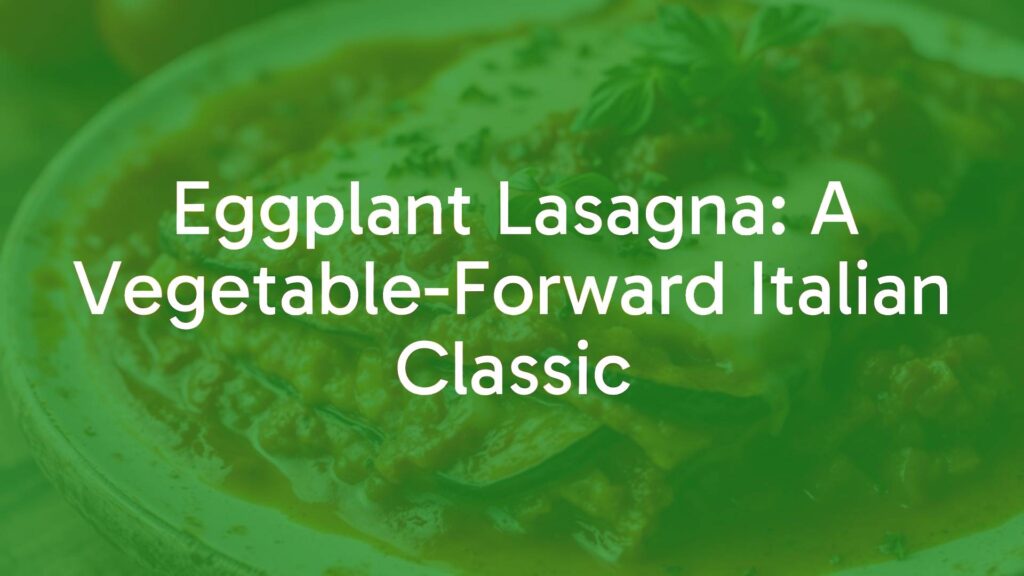Eggplant Lasagna: Characteristics and Appeal
Eggplant lasagna stands out as a delicious, vegetable-forward reinterpretation of the classic Italian lasagna. Substituting thinly sliced eggplant for the traditional pasta sheets, this dish offers a hearty yet lighter alternative that honors Italy’s affinity for seasonal produce. The finished dish typically presents rich layers of tender eggplant, velvety tomato sauce, creamy cheeses, and aromatic herbs, resulting in a deeply satisfying balance of textures and savory flavors.
Historical Roots and Regional Context
While lasagna traditionally features wide bands of pasta layered with meat sauce and cheese, eggplant lasagna—also known as lasagna di melanzane—reflects the southern Italian love of using fresh vegetables in place of pasta or proteins. The widespread cultivation of eggplants in Campania and Sicily fostered the creation of eggplant-based baked dishes. The concept likely evolved alongside other famous southern classics like parmigiana di melanzane, merging local ingredients with the classic lasagna structure.
Signature Ingredients and Preparation
Eggplant lasagna is defined by a few essential elements:
- Eggplant: Fresh aubergines are sliced—usually lengthwise—then salted, drained, and either grilled, roasted, or lightly fried to develop flavor and soften their texture.
- Tomato Sauce: A robust tomato sugo, often simmered with garlic, onion, and fresh basil, forms the saucy foundation for each layer.
- Cheese: A combination of cheeses such as mozzarella, ricotta, and Parmigiano-Reggiano adds creaminess and savory depth.
- Herbs: Fresh basil, oregano, or parsley highlight the dish’s Mediterranean profile.
The assembled dish is baked until bubbling and golden on top. The result is a layered casserole with a delicate interplay of creamy, tangy, and earthy notes, with eggplant slices absorbing the flavors of sauce and cheese.
Popular Variations and Adaptations
Eggplant lasagna is appreciated for its flexibility. Common adaptations include:
- Vegan Versions: Dairy-free cheeses or tofu ricotta can be used to create a plant-based dish.
- Meaty Additions: Some variations include layers of beef or pork ragù for extra heartiness.
- Grilled vs. Fried: For a lighter version, eggplant slices may be grilled instead of fried, reducing oiliness and keeping flavors bright.
- Pasta Hybrid: In some kitchens, both sliced eggplant and traditional pasta are layered together for added texture and substance.
Ingredient substitutions abound—zucchini or squash may replace eggplant, or smoked scamorza cheese might be used for a deeper flavor.
Serving Suggestions and Pairings
Eggplant lasagna is often served as a satisfying main course, accompanied by a crisp green salad or rustic bread. For drinks, it pairs well with medium-bodied Italian red wines such as Chianti or Nero d’Avola, which complement the tomato and eggplant’s robust flavors. A chilled sparkling water with lemon makes a refreshing non-alcoholic companion.
Slices of eggplant lasagna can also be enjoyed the next day, as the flavors deepen and meld with time. This versatility makes the dish a beloved option for family meals, gatherings, or casual entertaining—celebrating Italian ingenuity, seasonal ingredients, and heartwarming comfort.

